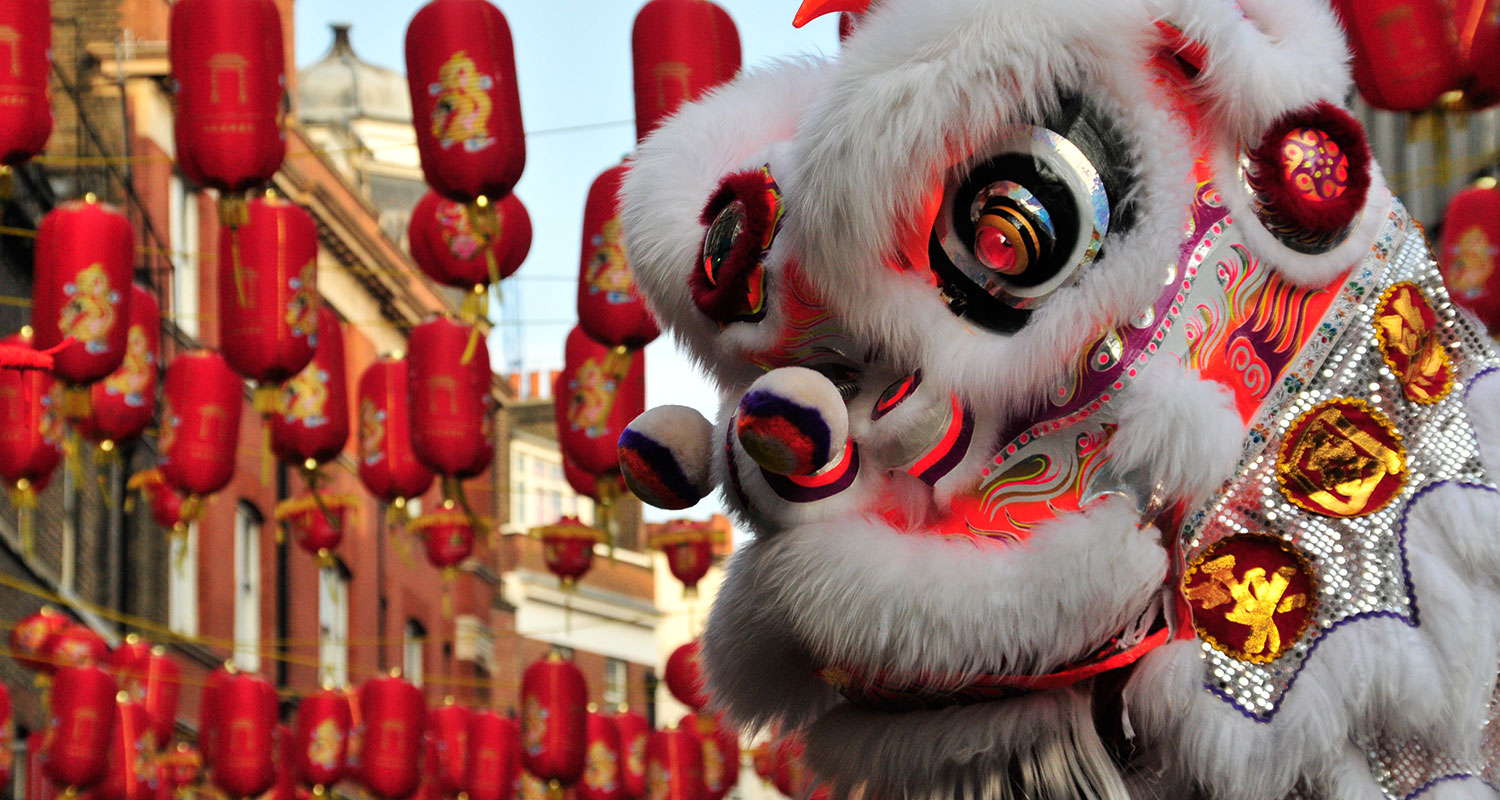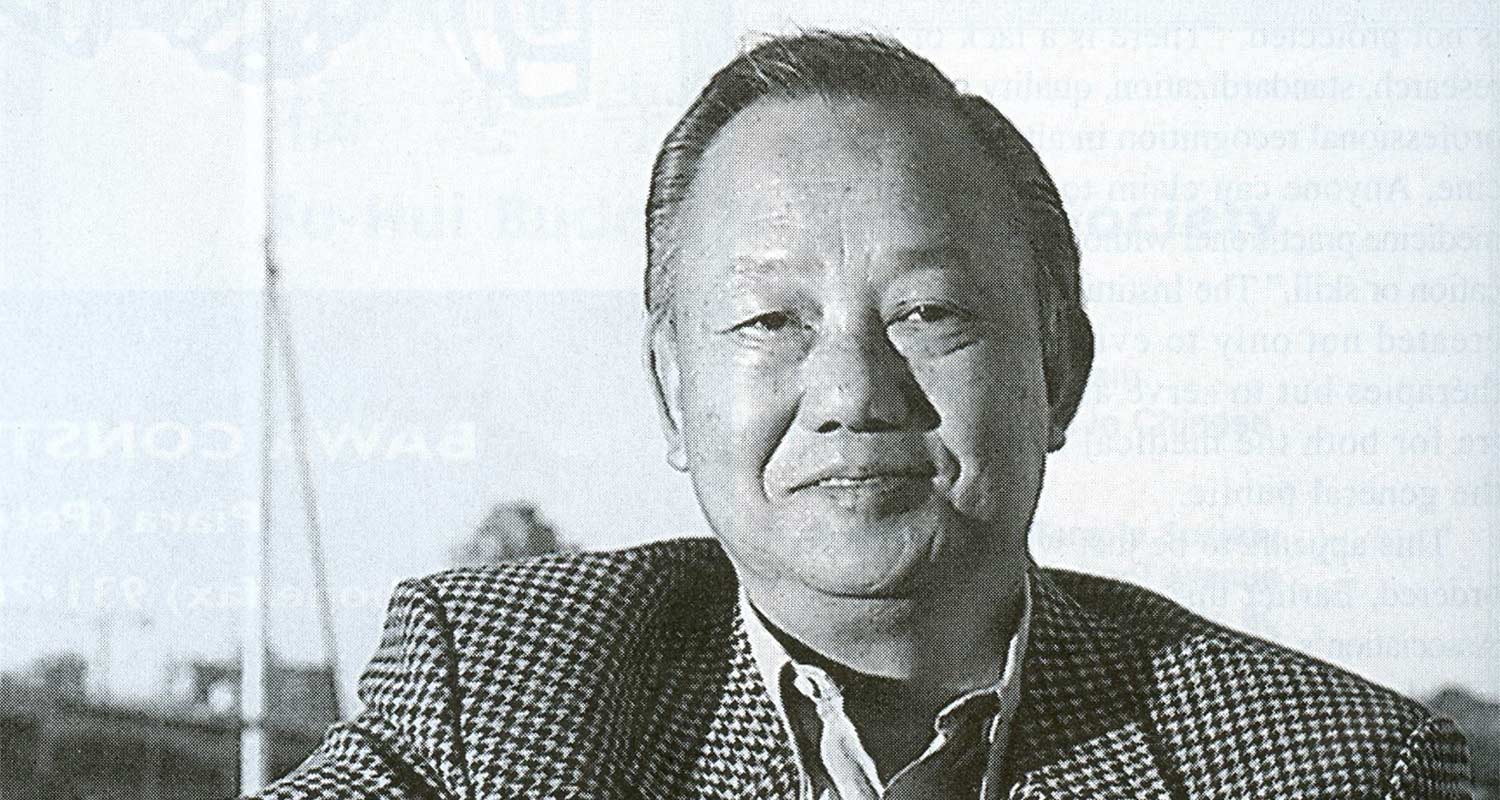Like dragons and unicorns, Chinese lions are creatures of myth and legend. It is said that a long time ago a village in China was threatened by a lion living in the woods nearby. At first, the fearful villagers would gather together banging pots and pans to scare the beast. Eventually, some villagers dressed like the lion and frightened it away.
A tradition was started. Now, Chinese lions are said to possess supernatural powers that can ward off evil spirits and clear the way for good fortune and prosperity. Dances honouring Chinese lions are an important part of Chinese culture and are prominent features of many celebrations such as weddings, business openings and, of course, Chinese New Year.
Performing A Lion Dance
The original lion dances were performed with a shield or wicker disc and a long cloth attached to the rim for a body. A colourful, fierce lion-face was painted on the disc, often under the Chinese character Wang (meaning King). Over time, artists began making the face more elaborate, adding depth and a three-dimensional appearance to their lions by building up the surface: wicker structures created eyes, cheeks and teeth which then were covered with silk before painting. These flat-faced lions can still be seen in parts of China and Taiwan.
Later, a movable jaw was added so that the lion could open and close its mouth. Soon artisans were creating fully enclosed masks with moving ears and blinking eyes and the lions began to take on a life of their own.
Lion dances are performed by teams of dancers and musicians. A lion team consists of at least five performers: a head, a body, a drummer, a gong player, and one or more cymbalists. There are two very distinct styles of lion dance: the Peking (or Beijing) Lion, popular in northern China, and the southern lion, popular throughout Southeast Asia.
The southern lion is most common in Canada. Unlike the northern style which has been mainly the preserve of professional acrobats, the southern lion dance has always been taught in martial arts schools and brotherhood associations. With the huge migration of people from southern China in the last hundred years, southern lion dancing has spread around the world. In fact, lion dancing may be now more popular outside of China than within China itself.
The Different Kinds Of Lion
The colour of the lion is an important indicator of the lion’s origin and character. The northern lion is always yellow, but the southern lion displays a variety of colours. According the Mr. Hilbert Yiu, leader of one of Vancouver’s best lion dance teams, there are three types of southern lions: the black lion, the red lion and the multi-coloured (or gold) lion.
The black lion is the youngest. It is strong with quick, sharp, aggressive movements and a short black beard. This lion is often called a fighting lion and is usually performed by newer teams. The red lion represents luck, happiness and prosperity. The multi-coloured lion is the oldest and the wisest. It has a long white beard and a graceful, musical gait. At business openings, weddings and other festivities, most teams favour a red or multi-coloured lion.
Both northern and southern styles have a tradition of using props in their performances. The Peking lion often stands on a giant ball and rolls it over a huge teeter-totter, or traverses a high wire. Its southern cousin climbs ladders and balances on benches, upside-down pots or the upright legs of an overturned table.
The dog-like Peking lion often appears happily bouncing, tilting its head and wagging its tail. The performers are completely dressed in a costume with shaggy yellow fur and red highlights. The small head is solid gold in colour, with a happy, playful expression, wide square jaw and a red beard. Northern lions often appear in family groups of three or more-two parents and at least one offspring. The group is often accompanied by a lion tamer, usually a woman or young boy. The lion tamer holds a small ball aloft to entice and tease the lion, encouraging it to perform more and more difficult acrobatic manoeuvres.
The cat-like southern lion is more independent, sometimes going along with the tamer-and sometimes turning on the tamer in a moment of playful aggression. This lion appears to be a more serious creature, conveyed by the strong, martial-arts influenced footwork, low stances and powerful, quick head movements.
Renewed Interest For The Dance
Recently there has been renewed interest in lion dancing. As mainland China opens up, troupes of acrobats including lion performers have toured the world. Also, international lion dance competitions and video technology have facilitated the spread of high-level skills.
There has been a blending of old styles into a new international competition style. This style is extremely colourful and exciting to watch. It uses the head of the southern lion and its basic footwork, combined with the shorter body and acrobatics of the northern lion. At international competitive levels, the top teams push each other to choreograph increasingly dynamic and dangerous stunts. In a particularly difficult stunt, the head dancer balances on one leg while standing on the thighs or shoulders of the body performer. A tail dancer stands ten feet in the air on pedestals barely the width of his foot. The head then careens to unfurl a banner wishing luck and prosperity.
So the next time you attend a lion dance, note the colour of the lion, the movements of the performers and the energy of the dance. But, most of all, if you note the faces of the children in the audience you will see wide-eyed wonderment and many nervous smiles as the mythical dragon dances into their hearts and imaginations.
Original images in the print article were courtesy of Raymond Shum.










